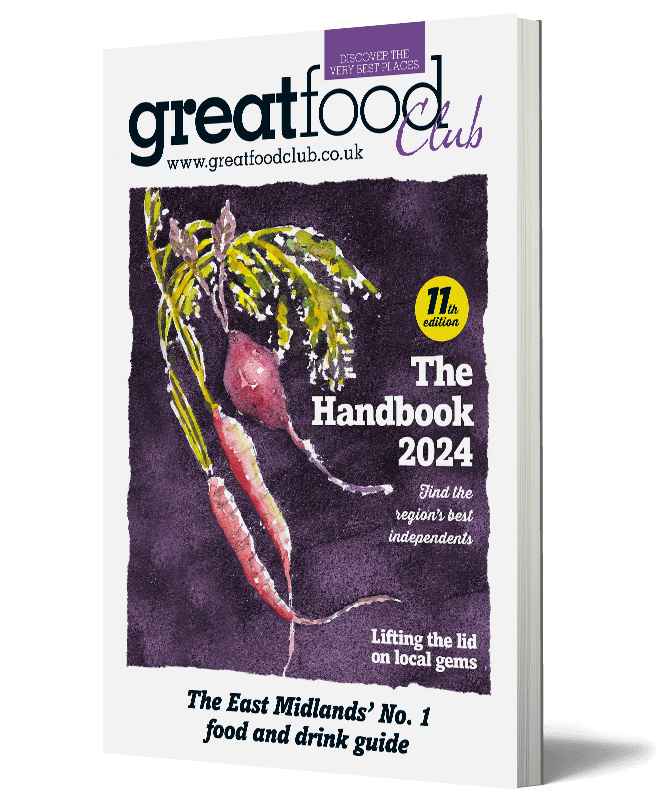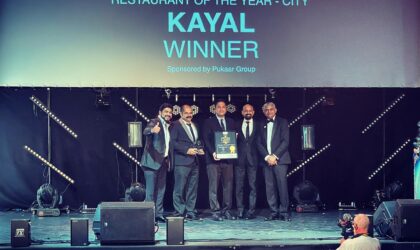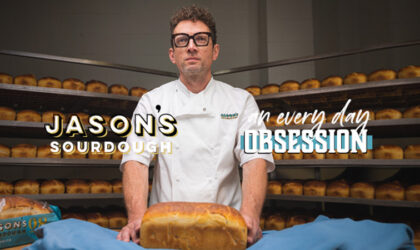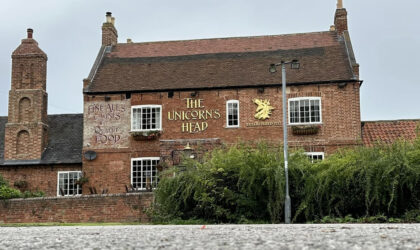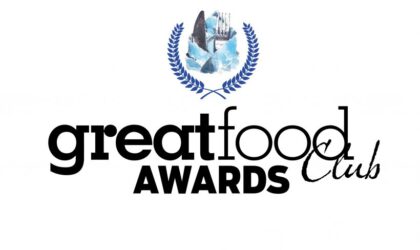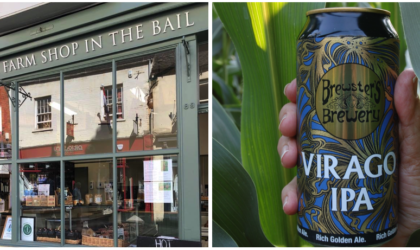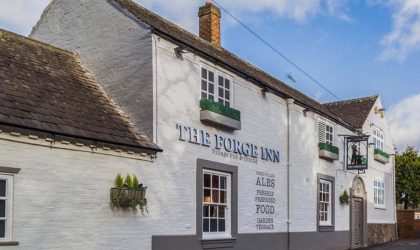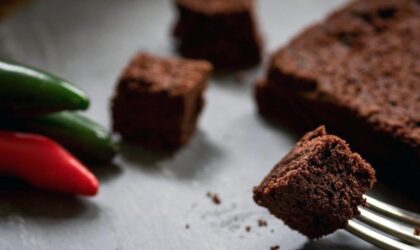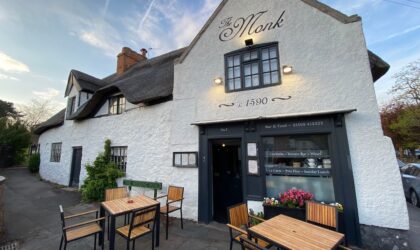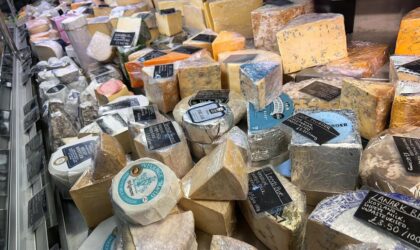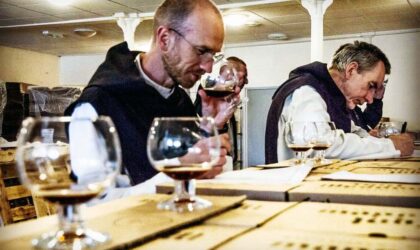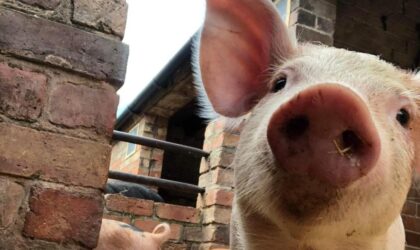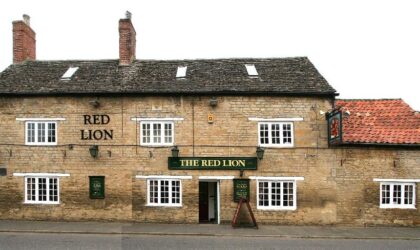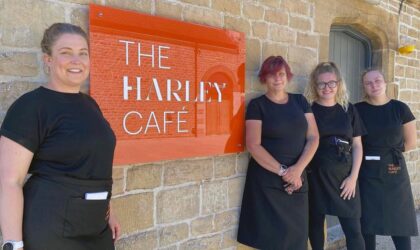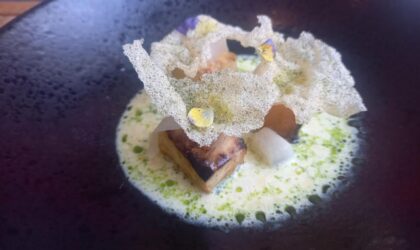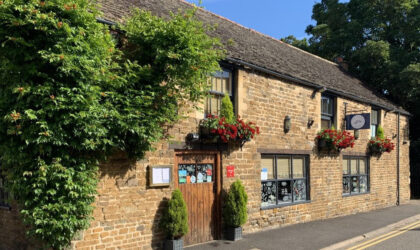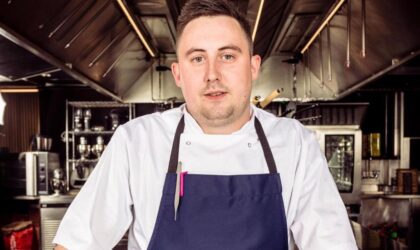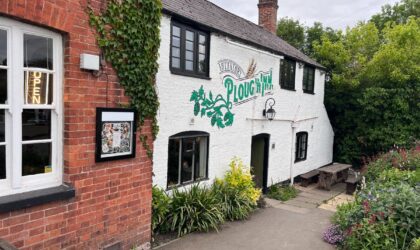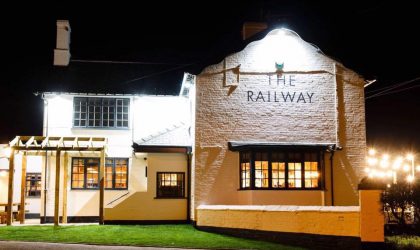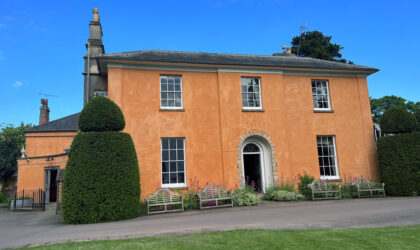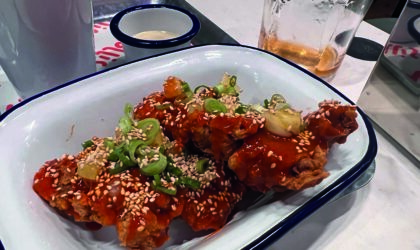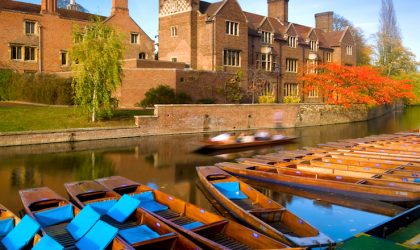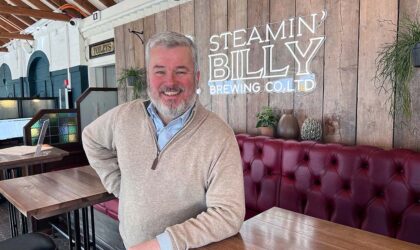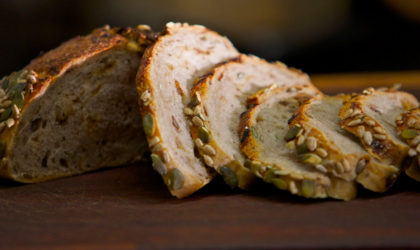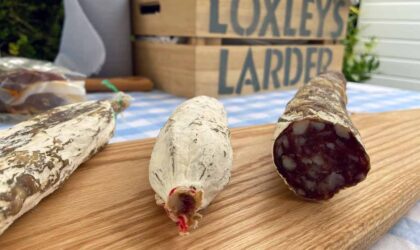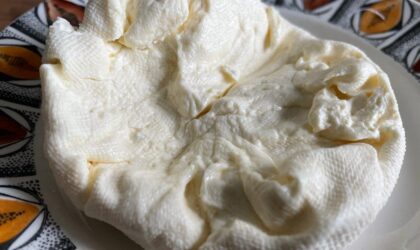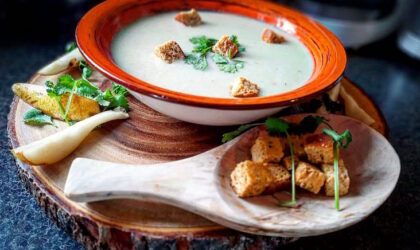We visit Eglantine Vineyard in Nottinghamshire
It is a lovely warm, sunny and slightly breezy autumn morning, and I am standing on the top of a hill overlooking rolling countryside surrounded by vines and ripening grapes. In fact, there are vines on this hillside as far as the eye can see. I know you are perhaps envying the life of a food writer – visiting Italy, France, Germany or Spain to seek out great wines. But I am in Costock, Nottinghamshire.

The Eglantine Vineyard is the oldest in Nottinghamshire. It was established in 1979 by the delightful Veronica and Tony Skuriat, who hosted my visit to their four-acre site in south Nottinghamshire. Neither Veronica nor Tony had any experience of wine making when they found an old vine in a lean-to greenhouse as they cleared the garden of their new home in West Bridgford more than 37 years ago.
With books from the local library, Tony, a former chemistry teacher, essentially taught himself the ancient art of the vintner. That original Black Hamburg vine from the lean-to went with them when they moved out to Costock and still resides there, although it is now too old to be productive.
From that one vine grew, figuratively speaking, the Eglantine Vineyard. The original 500 or so vines planted now number 4,000 and Veronica and Tony are helped to manage the site (vines are very labour intensive to maintain and everything is done by hand) by a “club” of volunteers, ranging from students to Veronica’s band of “elderlies” who come each season to help with the pruning and picking.

Veronica and Tony Skuriat
My visit was fascinating. The small on-site winery produces 6,000 bottles of wine a year for their own sales, and more for others. The range also includes mead (with honey from the vineyard’s own apiary), cherry wine and a superb award-winning dessert wine made with the best grapes of the crop – North Star.
The sparkling wine is made using the traditional “Champagne” method. Good quality sparkling wine is not made by forcing carbon dioxide through the still wine to create bubbles, as apparently some cheaper wines do – “we don’t use a soda stream” as Tony put it. Indeed not, they use an amazing contraption known as a gyro-pallet. Once the still wine is ready, yeast and sugar are added to allow additional fermentation in the bottle. As the yeast consumes the sugar it produces the natural bubbles. Then, as the sugar runs out the yeast becomes inactive and, thanks to the gyro-pallet’s constant movement, finally ending with the bottles stored neck-down, it accumulates in the neck of the bottle. A quick freeze of the bottleneck and the dead yeast can be popped out, leaving a natural, gently sparkling wine. Who knew?

The vineyard has over 200 varieties of grape, but wine is made from just six – Madeleine Angevine, Pinot Noir, Regent, Chardonnay, Seyval and Pinot Meunier.
I had a lovely and informative day at Eglantine (which by the way is a variety of rose I understand). Veronica and Tony are delightful hosts and they are happy to conduct tours for groups.
I took home a bottle of cherry wine and a bottle of the wonderful North Star. I had planned to save the dessert wine for Christmas but in the interests of research (ahem) I tried a small glass at the weekend. Absolutely fantastic, honey and toffee in a glass – and well worth the 18 months from grape to bottle that the process takes.
Check out this hidden gem next time you are in south Nottinghamshire and also look out for more local wines in the next few years as Tony and Veronica’s daughter and her husband have taken on the baton and planted their own vineyard at Hickling Pastures.



